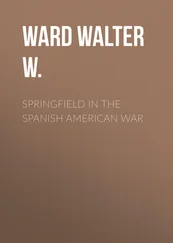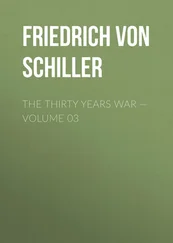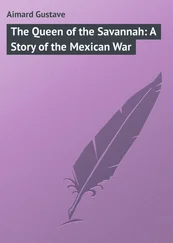Ampudia’s case was by no means desperate even now. His losses had been small—twenty-nine officers and 338 men killed and wounded, according to his report. There were provisions, ammunition and artillery enough; the strong buildings round the plaza and market-place, defended with resolution by a large garrison, could not easily have been taken; and the division of the Americans into widely separated commands invited a sortie.10
The situation was, however, by no means agreeable. After nightfall the Americans planted two howitzers and a 6-pounder on the top of a high building close to the western side of the plaza. Taylor’s mortar had been carried to Worth during the day, and after sunset it began to fire now and then on the cathedral, where tons of gunpowder were stored. The citadel undertook to reply, but the mortar, planted behind the stone wall of the cemetery, was not likely to be struck, and a single one of its bombs might conceivably have blown the Mexican army to pieces. In fact so might a shot from Taylor’s 24-pound howitzers, which delivered two shells effectively after dark. On the southern side of the river, opposite the town, the Fifth Infantry had planted one of the El Soldado guns at the third work on Federation ridge, where it could at least have proved annoying. The horses of the cavalry were in the way. The garrison of the citadel could not promptly coöperate with the troops in town, for it had sealed up the exit. Ampudia’s defensive policy discouraged the soldiers, for even though some of them flanked the retiring Americans on Wednesday afternoon, they were not permitted to reoccupy the houses abandoned by Taylor, and still less to attack the redoubts. Despondency was general; some of the leading officers urged surrender; and Ampudia, it was reported, keeping the choicest corps near his person, shut himself up in the cathedral until a shell dropped near it, and then fled to a private house.10
Naturally, then, early on Thursday morning one of his aides carried to the American general a proposition to give up the city, and retire with the troops and military material. Taylor replied with a demand for unconditional surrender, and insisted upon having an answer by noon. Instead of complying Ampudia sent a request for a personal interview. The result was a joint commission. Vexatious negotiations followed. The tedious and wily methods of Mexican diplomacy were thoroughly tried; but at length an ultimatum from Taylor’s representatives ended the affair, and the terms of capitulation were signed. These provided that the citadel should be given up immediately, that within a week the Mexican troops with their arms, accoutrements and six field pieces should retire—without giving their parole not to fight again—beyond the line of Rinconada Pass, Linares and San Fernando de Presas, that before this evacuation of Monterey the town should be occupied by the Americans for hospital and storage purposes only, and that for eight weeks—“or until the orders or instructions of the respective governments can be received”—the Americans would not cross the specified line.11
As Polk asserted and the General himself admitted, Taylor violated his orders in granting such terms, and his excuses for doing so were signally unconvincing, while some of them involved perhaps the virtual assumption on his part of a political authority superior to the President’s. But substantial reasons for the terms did exist. “Considering our situation,” explained the General privately, they were not over-liberal; and that was true. Being very short of ammunition and provisions, he could only negotiate, assault or retreat. According to his spokesmen in the Senate, his effectives numbered only some 5000 and probably they did not reach those figures. About one third of them had no bayonets. The First Division of regulars had been crippled; the Second was tired out; and the volunteers had been so far demoralized, that in Meade’s opinion they could no longer be depended upon. Worth, chief American representative on the joint commission, had not “the slightest confidence” left in Taylor’s leadership, and wrote privately that “many others” shared his opinion, while a still greater number felt doubtful.12
With such troops, feeble artillery and scant ammunition, to attack an enemy of proved fighting quality, now at bay in stone houses, fully supplied with guns and munitions, and comparatively fresh, was not an inviting proposition. In short, as Crittenden and Clayton stated in defence of Taylor on the floor of the Senate, it was not feasible to storm the city; and to retreat with sick and wounded over such a route, pursued by mobile infantry and sleepless mounted men, and harried by an exultant population, would have meant ruin. It was a wise course to escape from this dilemma as he did, and the truth could not be told.12
September 25 the citadel was evacuated, and the next day with drums beating and banners flying the first brigade of Mexicans left the city—all noting with curious interest the difference between their trim uniforms and freshly pipe-clayed belts and the unkempt appearance of the victors, who, as an American said, were as dirty as they could be without becoming real estate. The second brigade followed on the next day, and the rest of the troops on the twenty-eighth. Monterey, with a quantity of indifferent gunpowder and a number of cannon, many of them bad, was ours, and soon the people of the United States, whom a costly but valorous battle impressed far more than orderly, scientific operations could have done, were again acclaiming Taylor. By distance, by his courage, by his picturesque individuality, and by his very position as commander of the one American army fighting the Mexicans, he was idealized. His excellent reports—the work of Bliss—confirmed every favorable impression; and the writers of the day, fully aware that he was already a popular hero and anxious to suit the prevailing taste, colored the facts until these could hardly be recognized. Men on the ground, in contact with the crude realities, felt otherwise. Taylor’s want of prevision and of generalship was in fact bitterly censured there. Worth “is the high comb cock of the army,” wrote one officer. He has won all the laurels, though Taylor will have the glory at home, remarked a surgeon.13
As for the conduct of the troops in general, however, there could be only one opinion. “Three glorious days,” was General Scott’s description of the struggle. War is—war. Dreadful things were done, splendid men were cut down. Yet if there be glory in fidelity and courage, in meeting extraordinary hardships, and in triumphing over extraordinary difficulties, then Scott’s description was correct.13
XIII.
Saltillo, Parras, and Tampico
Table of Contents
For men supposed to have won a splendid victory, Taylor and his army seem to have been rather low in their spirits after the capture of Monterey. Taylor admitted that his forces had been “greatly reduced.” Learning that a part of the Second Infantry had arrived on the Rio Grande, he described this trifling reinforcement as “most welcome.” The Texas troops wished to go home and were discharged. To replace them he counted on the Tennessee and Kentucky horse; but these regiments, having been ordered to San Antonio, were long in reaching the front. October 15 he estimated his aggregate effective strength as less than 12,000. 1Chills and fever, a depressing malady, was extremely prevalent; and a strong tendency to desert appeared to indicate a generally unsatisfactory state of things.2 Not only priests but Mexican officers remaining at Monterey to convalesce or to care for the sick, stimulated this tendency; and about the middle of November all such officers, not indispensably needed by the sick and wounded, received peremptory orders to go south. A little later, it was reported, the alcalde was imprisoned for the same offence. Moreover bands of Mexicans, not dismayed by the American triumphs, hung upon Taylor’s lines to rob and kill.6
Читать дальше












